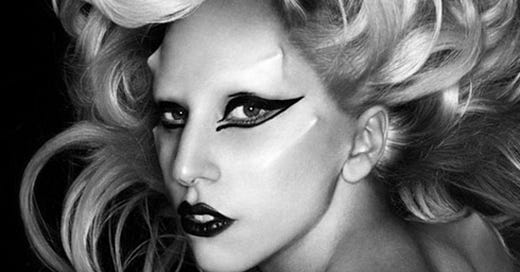Under natural circumstances, newborn human males outnumber females very slightly, with about 50.5 percent of babies being male and 49.5 percent female. This is thought to reflect the greater likelihood that males will die in war or the other risky behavior their testosterone inclines them toward. By the time they mate, males and females are equally numerous.
This equal ratio is enforced by natural selection. If males somehow became more numerous than females at mating age, then females would be in comparatively greater demand, and genes that tended to produce more females would be selected for. The system would rebalance.
In some plant species, individual plants have both male and female reproductive organs. They are called monecious. In other species, the male and female organs are on separate plants. These are called dioecious. In animals, especially vertebrates, the evolutionary preference has been for separate males and females; this allows greater specialization and adaptation to ecological niches.
Humans aren’t born Republicans or Democrats, exactly, although many Americans are born into families or households that favor one party or the other. Yet we come into the world with temperaments that seem to be at least partly determined by genetics. Some children are more inquisitive than others, more willing to take risks, likelier to ignore parental warnings and perhaps get into trouble. Other children are more cautious, more comfortable with the status quo, more obedient, more loyal. As children grow and experience life, their innate temperaments are somewhat modified, but much remains.
Studies have shown that traits of temperament predict, albeit imperfectly, political philosophy. Inquisitive risk-takers tend to be liberals—or progressives, in current American parlance. Cautious loyalists tend to be conservatives. This makes sense. Progressives think things can get better, and so are willing to try new approaches to social problems. Conservatives think things can get worse, and so are inclined to stick with the status quo.
To the extent that Democrats are progressives and Republicans conservatives, then, it’s not outlandish to say that at least some babies are born Democrats and others Republicans. Occasionally people switch parties, but usually that’s because the parties have shifted their policies rather than that the people have changed their attitudes.
If the above is true, it helps explain not only why there are Democrats and Republicans, but why they are about equally numerous. The evolutionary success of the human species required both risk-taking and caution. The former led to exploration and invention, the latter to consolidation of gains already made. In other words, we wouldn’t have got to where we are today without both a progressive streak in our species makeup and a conservative streak. Conceivably both streaks might have evolved in single individuals; we could have been like monecious plants. In fact, nearly everyone is at least somewhat progressive in certain things and somewhat conservative in others. But specialization won out, and so the traits are most prominent in separate individuals.
As with the ratio of males to females in the population, the ratio of Democrats to Republicans has been nearly equal throughout the history of the two parties. When one party gained an advantage, the other party adjusted and the system found a new balance point between what was considered progressive and what conservative. Tax-funded old-age pensions were merely a Democratic dream until the Great Depression discredited the Republicans and gave the Democrats a large majority. Republicans fought Social Security at first but eventually acknowledged it as part of the new status quo. The Republicans regained parity with the Democrats; the equilibrium was restored.
We humans aren’t done evolving. We still require both risk-taking and caution. In American politics we need both Democrats and Republicans. We need Democrats to provide the spark to keep us trying to improve; we need Republicans to keep us from going off the rails.
What we don’t need is for Democrats to become like Republicans, or vice versa. We are not plants; we are proud vertebrates.
What we do need is for each side to recognize the legitimacy—indeed the necessity—of the other. In their most generous moods, Democrats and Republicans tend to treat each other as unavoidable evils. They talk and act as though they wish the other would disappear.
This would be very bad for America. Far worse than the most dysfunctional two-party system would be even the best one-party system. However enlightened the one party might be at the outset, it wouldn’t stay that way for long. Enlightenment becomes coercion becomes tyranny.
So, Democrats, be as happy as you like to not be Republicans, but learn to be happy that there are Republicans. Likewise for you Republicans. Most of us have been the way we are since birth; let’s make the most of it.




Your main point is spot on, but I’d like to propose an alternative (or complementary) hypothesis on the mechanism that supports this equilibrium. That being - constantly winning breeds complacency and corruption while constantly losing forces parties into a higher standard of rigor and honesty. The example that comes to mind is the gilded age Republicans that nominated James Blaine, giving rise to the mugwumps and clearing the way for Cleveland’s three popular vote wins. Reminds me of the Mark Twain quote “Whenever you find yourself on the side of the majority, it is time to pause and reflect.”
Regarding your example of during the Great Depression, wasn’t Alf Landon already in favor of some New Deal programs? Didn’t take long for republicans to more or less abandon laissez faire.
Pardon my clumsy syntax! As a retired professor of English, I should know better! Let me rephrase my final sentence: Is it just a coincidence that Scandinavian and western European countries are parliamentary democracies with several political parties?